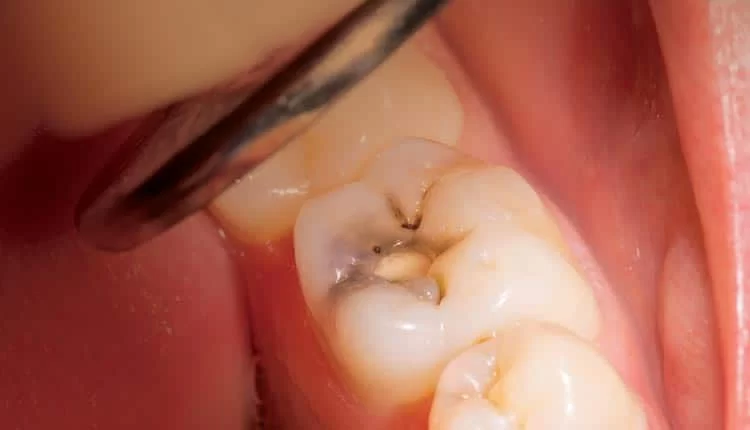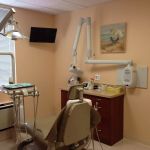
- Understanding Tooth Decay and Its Causes
- Effective Tooth Decay Prevention Strategies for Teenagers and Adults
- Safe Dental Care Practices to Maintain Oral Health
- Real-Life Examples Showing Prevention Success
- Professional Advice and Where to Find Help
1. Understanding Tooth Decay and Its Causes
To effectively prevent tooth decay, it’s crucial to understand how this common dental problem develops. Tooth decay begins when plaque — a sticky film of bacteria — accumulates on the surface of teeth. These bacteria feed on sugars from foods and drinks, producing acids that gradually erode the tooth enamel. Over time, this erosion causes cavities, sensitivity, and can lead to more serious infections if left untreated.
Both teenagers and adults are vulnerable to tooth decay, but their risk factors might differ. Teenagers often face higher risks due to dietary habits such as frequent consumption of sugary snacks, sodas, and irregular oral hygiene. Adults, on the other hand, might experience increased risk from factors like dry mouth caused by medications, gum recession exposing sensitive tooth roots, or lifestyle habits like smoking.
Recognizing these causes allows individuals to adopt targeted prevention strategies. Preventing tooth decay in teenagers and adults involves more than just brushing teeth; it requires a comprehensive approach that addresses diet, hygiene, and lifestyle choices.
2. Effective Tooth Decay Prevention Strategies for Teenagers and Adults
2.1 Consistent and Proper Oral Hygiene
Maintaining consistent oral hygiene is the cornerstone of preventing tooth decay. Brushing twice daily with fluoride toothpaste helps remove plaque and strengthens enamel against acid attacks. Teenagers should be encouraged to develop habits like brushing for at least two minutes and not rushing through the process, which can often happen due to busy school days or distractions.
Flossing is equally important, especially for adults who are more prone to gum recession and spaces between teeth where plaque accumulates. Flossing removes trapped food particles and bacteria that brushing alone cannot reach.
2.2 Balanced Diet and Sugar Intake Control
Diet plays a pivotal role in tooth health. Frequent snacking on sugary or acidic foods fuels bacteria that cause decay. Encouraging teenagers and adults to limit sugary treats and choose tooth-friendly snacks like raw vegetables, nuts, and cheese can significantly reduce decay risk.
For example, a teenager who replaces soda with water or milk after meals reduces the acid exposure time on teeth. Adults can also benefit from reducing coffee or acidic beverage intake that can wear down enamel.
2.3 Use of Fluoride and Dental Sealants
Fluoride is a proven agent that helps remineralize tooth enamel and prevent decay. Using fluoride toothpaste and rinses is recommended for both teenagers and adults. Additionally, dental sealants — a protective coating applied by dentists — can shield chewing surfaces of molars where decay often starts. Sealants are especially effective for teenagers but can be beneficial for adults with deep grooves in their teeth.
2.4 Regular Dental Check-ups and Cleanings
Routine visits to the dentist allow early detection and treatment of potential decay before it worsens. Professional cleanings remove hardened plaque (tartar) that regular brushing cannot. Dentists can also offer personalized advice based on an individual's risk factors, such as recommending specific fluoride treatments or diet modifications.
3. Safe Dental Care Practices to Maintain Oral Health
Preventing tooth decay isn’t just about being effective — it’s also about ensuring safety in oral care routines. Overuse or misuse of dental products can sometimes do more harm than good.
3.1 Choosing the Right Toothbrush and Technique
Using a soft-bristled toothbrush prevents enamel erosion and gum damage. Aggressive brushing with hard bristles or abrasive toothpaste can wear down enamel and expose sensitive layers of the teeth. Proper brushing technique—gentle circular motions and covering all tooth surfaces—maximizes plaque removal without damage.
3.2 Avoiding Harmful Habits
Habits like smoking, excessive alcohol consumption, and nail-biting can contribute to poor oral health and increase the risk of decay. Both teenagers and adults should be informed about how these behaviors weaken the immune response in the mouth, reduce saliva flow, and increase acid-producing bacteria.
3.3 Safe Use of Over-the-Counter Whitening Products
Whitening products have become popular but can sometimes irritate gums or damage enamel if used excessively or incorrectly. It’s best to consult dental professionals before starting whitening treatments to ensure they are safe and appropriate, especially for people with sensitive teeth or existing dental work.
4. Real-Life Examples Showing Prevention Success
Consider the story of Emily, a 16-year-old who struggled with frequent cavities due to her love for sweets and irregular brushing. After visiting a dental clinic recommended by Dentistry Toothtruth, she received tailored advice on better brushing techniques, dietary changes, and dental sealants. Within a year, her cavity rate dropped dramatically, and she now enjoys healthier teeth and increased confidence.
Similarly, Mark, a 45-year-old adult with a history of dry mouth due to medication, found his teeth becoming more sensitive and prone to decay. By adopting a regimen that included saliva-stimulating products, regular fluoride treatments, and quitting smoking following guidance from Dentistry Toothtruth experts, Mark successfully reversed the early signs of tooth decay and improved his oral health.
5. Professional Advice and Where to Find Help
Preventing tooth decay effectively and safely requires a blend of knowledge, habits, and professional support. For personalized recommendations, trusted dental products, and expert services, Dentistry Toothtruth is a valuable resource. They offer comprehensive information tailored to teenagers and adults, helping users find the most suitable oral care solutions and services.
Remember, tooth decay prevention is a lifelong commitment, but with the right approach, it’s entirely achievable. Starting today with informed steps can ensure a brighter, healthier smile for years to come.







 Premiere Dental of West Deptford4.0 (352 review)
Premiere Dental of West Deptford4.0 (352 review) Kathleen Schultz, DMD0.0 (0 review)
Kathleen Schultz, DMD0.0 (0 review) Dr. Shilpa Mendelson4.0 (167 review)
Dr. Shilpa Mendelson4.0 (167 review) University Dental Associates4.0 (302 review)
University Dental Associates4.0 (302 review) Smile Exchange Orthodontics5.0 (49 review)
Smile Exchange Orthodontics5.0 (49 review) Willamette Dental Group - Puyallup4.0 (117 review)
Willamette Dental Group - Puyallup4.0 (117 review) The Importance of Oral Health Education During Pregnancy for a Healthy Pregnancy
The Importance of Oral Health Education During Pregnancy for a Healthy Pregnancy Best Tips for Brushing Your Teeth Properly for Healthy Gums: Essential Techniques for Oral Health
Best Tips for Brushing Your Teeth Properly for Healthy Gums: Essential Techniques for Oral Health Why Skipping Dental Checkups Can Lead to Bigger Oral Health Problems
Why Skipping Dental Checkups Can Lead to Bigger Oral Health Problems Advantages of Porcelain Dental Restorations
Advantages of Porcelain Dental Restorations How Can Diabetes Cause Tooth and Gum Problems? Preventing and Managing Oral Health Issues
How Can Diabetes Cause Tooth and Gum Problems? Preventing and Managing Oral Health Issues Healthy Habits for Promoting Good Oral Health and Hygiene: Tips for a Healthy Smile
Healthy Habits for Promoting Good Oral Health and Hygiene: Tips for a Healthy Smile